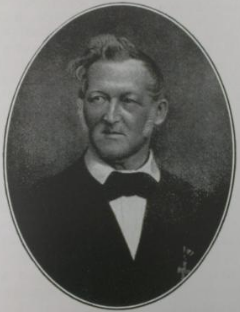万物简史(MP3+中英字幕) 第624期:神秘的两足动物(2)
日期:2019-10-18 09:09
(单词翻译:单击)
At the time Dubois conceived his plan to search for a missing link, the human fossil record consisted of very little: five incomplete Neandertal skeletons, one partial jawbone of uncertain provenance, and a half-dozen ice-age humans recently found by railway workers in a cave at a cliff called Cro-Magnon near Les Eyzies, France. Of the Neandertal specimens, the best preserved was sitting unremarked on a shelf in London. It had been found by workers blasting rock from a quarry in Gibraltar in 1848, so its preservation was a wonder, but unfortunately no one yet appreciated what it was. After being briefly described at a meeting of the Gibraltar Scientific Society, it had been sent to the Hunterian Museum in London, where it remained undisturbed but for an occasional light dusting for over half a century. The first formal description of it wasn't written until 1907, and then by a geologist named William Sollas "with only a passing competency in anatomy."
因此,德国的尼安德特山谷倒成了第一批早期人类化石的发现地和命名地——不过这倒歪打正着,因为尼安德特这个词在古希腊语里面恰好是“新人”的意思。1856年,在那里,工人们又在杜塞尔河沿岸峭壁的另一个采石场发现了一些怪模怪样的骨头。他们把这些骨头交给当地学校的一名教师,因为他们知道他对自然界所有的事物都感兴趣。很值得称道的是,这位名为约多·卡尔·弗尔洛特的教师意识到他可能已发现了某种新的人类,不过这种人类是什么,他们有什么特点,这些问题人民还需要争论一段时期。
在杜布瓦想出他关于寻找联结猿和人类的缺环的计划的时候,已经发现的人类化石少得可怜:5块不完整的尼安德特人骸骨,一小块来源不明的颌骨,以及6块冰川期的人类骸骨,后者是铁路工人刚刚在法国莱埃济附近的克罗马农悬崖的一个洞穴里发现的。尼安德特人骸骨中最完整的一块后来被放在伦敦的一个架子上,没有引起人们的注意。它能被保存下来可以说是一个奇迹,因为它是1848年工人们在直布罗陀附近的一个采石场爆破岩石时发现的:不幸的是当时还没有人识货。有人在直布罗陀科学学会的一次会议上对它怍了轻描淡写的介绍,之后它就被送往伦敦亨特博物馆,除了偶尔有人轻轻擦去上面的灰尘以外,有半个多世纪无人碰过:直到1907年,才有人对它作了第一次正式描述。这人名叫威廉`索拉斯,是—位地质学家,“在解剖学方面只是勉强合格”。

约多·卡尔·弗尔洛特
因此,德国的尼安德特山谷倒成了第一批早期人类化石的发现地和命名地——不过这倒歪打正着,因为尼安德特这个词在古希腊语里面恰好是“新人”的意思。1856年,在那里,工人们又在杜塞尔河沿岸峭壁的另一个采石场发现了一些怪模怪样的骨头。他们把这些骨头交给当地学校的一名教师,因为他们知道他对自然界所有的事物都感兴趣。很值得称道的是,这位名为约多·卡尔·弗尔洛特的教师意识到他可能已发现了某种新的人类,不过这种人类是什么,他们有什么特点,这些问题人民还需要争论一段时期。


